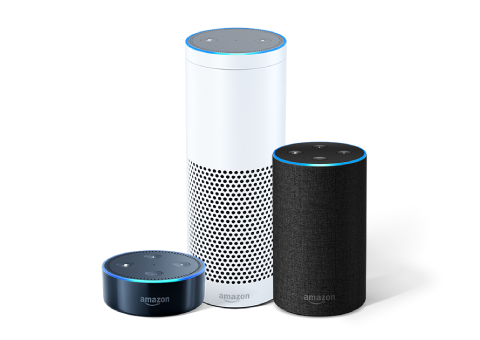Top Entertainment Trends from CES 2018
by
Brett Sappington | Feb. 12, 2018
There was no shortage of key entertainment announcements and takeaways from CES 2018 last month in Las Vegas. Here are the top trends from the event impacting the connected entertainment landscape:
-
Voice control continues to be the hot feature garnering consumer and industry attention. Pay-TV providers are considering their options (or, like Comcast, are already deploying voice controls), and manufacturers of set-top boxes, streaming devices, smart speakers, and remote controls were actively demonstrating their capabilities. Some are relying on
 established voice technologies like Amazon’s Alexa. Others, such as Samsung and Roku, are rolling out their own solutions.
established voice technologies like Amazon’s Alexa. Others, such as Samsung and Roku, are rolling out their own solutions.
-
Regarding voice, some in the industry are concerned that more “always listening” devices could become a problem, particularly if different devices start doing different things to the same command. Competition for being the control hub of the home will hurt the user experience (UX), as different products will compete for primacy.
-
Partnerships are the new rage in entertainment services. Some are ahead of the curve, aggressively pursuing partnerships in order to get their content or services on as many platforms as possible. Others remained focused on the traditional ecosystem and have yet to make significant moves. While all cable networks have established relationships with pay-TV providers, many such as Turner are now partnering with Amazon Channels and vMVPD players.
-
Virtual reality is in a similar place to where it was last year. Innovation continues, but the industry is still waiting for that “killer app” that will really drive adoption beyond early adopters. Lower-grade VR applications that use the smartphone and come packaged with a low-price viewer are becoming more common in retail stores. Events, such as the Olympics, also provide a platform for promoting VR experiences. More AR (augmented reality) apps are emerging, and other well-known brands, such as “Star Wars” and “The Walking Dead,” are trying to replicate the 2016 success of Pokémon Go.
-
Android TV boxes and devices are now attracting interest among operators and set-top box vendors. Google has made a number of operator-friendly changes and has made strides in overcoming operator fears that Google will take over their advertising business.
-
Speaking of Android, piracy through apps such as Kodi have also drawn the attention of operators. Because Google mandates that operators have to offer the entire store as part of using an Android box, they have to offer Kodi, which consumers can easily alter to access a virtually unlimited supply of pirated content.
-
Use and collection of viewer data are hot topics in the industry, and we are starting to see consumers (and lawmakers) become increasingly wary as to how viewer data is collected, used, and protected. Overall consumer opinions regarding use of their data by online video providers are mixed, with varied degrees of concern regarding the use and safety of viewing and personal data.
-
While 4K TVs are gaining in household penetration, 8K is closer to becoming a reality, especially in Japan and China. Samsung, Sony, and others debuted impressive 8K displays and professional cameras at CES 2018, which provide the basics for 8K to gain a foothold in the ecosystem. However, 8K in the U.S. remains a few years away.
- Cloud-based computing is taking a greater step into the consumer home. Two companies demonstrated examples of consumer applications. NVIDIA’s GeForce NOW allows users to play high-performance video games on low-performance computers, which expands the experience to a broader set of consumers. Shadow, a cloud-based startup, uses the consumer’s computer as a simple monitor, using cloud-based processing and storage to run applications as if they were running on a high performance system. While this type of functionality was previously reserved for the enterprise, consumer applications opens new possibilities for enhanced user experiences and business models.
Further Reading:
- Entertainment Device Controls: Refining the Ideal UX
- 55% of U.S. broadband households find it appealing to control entertainment and smart home devices through voice commands
-
Staking a Claim in the Connected Home: Service Provider Solutions
Next: Webcast: Opportunities for Service Providers in the Connected Home
Previous: Infographic: Smart Home Products Increase Home Network Demands
Comments
-
Be the first to leave a comment.
Post a Comment
Have a comment? Login or create an account to start a discussion.


